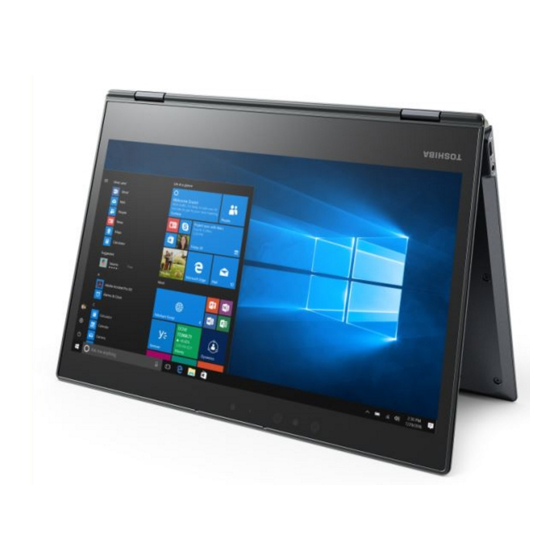
Summarization of Contents
Legal, Regulatory, and Safety Information
Copyright, Disclaimer, and Trademarks
Details copyright, disclaimer, and trademark notices for the user manual.
Regulatory Information
Provides information on regulatory compliance, including FCC, EU, and country-specific notices.
Disposal and Environmental Information
Covers EU eco-design, disposal of products/batteries, REACH, and country-specific disposal guidelines.
Notices and License Information
Includes Video Standard Notice, OpenSSL Toolkit License, and FreeType License issues.
Safety Precautions and General Guidelines
Covers ENERGY STAR, general precautions, ventilation, environmental factors, and injury prevention.
Getting Started with Your Computer
Equipment Checklist and Setup
Lists included items and explains manual conventions for initial setup.
Initial Computer Operations
Guides on first-time use, opening display, connecting power, and turning on the computer.
Understanding Windows and System Modes
Explains the Start menu, Windows taskbar, and different operating modes like Tablet.
Power Management: Shutting Down and Sleep Modes
Details procedures for shutting down, restarting, and using Sleep/Hibernation modes.
System Recovery Procedures
Describes creating recovery media and restoring the system from it or recovery partition.
Computer Components Overview
External Views and Ports
Identifies components on the left, right, back, and underside, including ports and indicators.
Front View and Internal Components
Details front view components, internal hardware like CPU, storage, RAM, and GPU.
Power Indicators and Descriptions
Explains the meaning of DC IN/Battery and Power indicators for status.
Basic Computer Operations
Tablet Mode and Screen Orientation
Provides instructions and precautions for using the computer in tablet mode and changing orientation.
Touch Screen and Touch Pad Gestures
Details gestures and operations for the touch screen and touch pad interactions.
Stylus Pen Usage and Replacement
Explains how to use the stylus pen, its actions, and pen tip replacement.
Keyboard Features and Function Keys
Covers keyboard indicators, function keys, special keys, and their usage.
Battery Management and Charging
Explains battery types, charging, monitoring, and extending battery life.
Connecting External Devices via Adapters
Details using USB Type-C adapters for HDMI, VGA, and RGB monitor connections.
Utilities and Advanced Usage
TOSHIBA System Utilities
Describes Password Utility, System Settings, Setup Utility, eco Utility, and Service Station.
Special Computer Features
Details features like automatic power off, sleep/hibernation modes, and power management.
Password and System Settings Configuration
Explains setting up user and supervisor passwords and configuring system settings.
USB Charge and Connectivity Features
Covers USB charge, Sleep and Charge, and System ON CDP Charge functionalities.
TOSHIBA Setup Utility Guide
Guide to accessing and using the BIOS setup utility for system configuration.
Troubleshooting Common Issues
Problem Identification and Resolution Process
Provides guidelines for identifying and resolving problems, including preliminary checks.
Diagnosing Hardware and Software Problems
Helps diagnose issues related to software, hardware, and peripherals.
Troubleshooting Power, BIOS, and Keyboard Issues
Covers power, AC adapter, battery, BIOS, keyboard, and display panel troubleshooting.
Troubleshooting Storage, Input, and Wireless Issues
Addresses problems with internal storage, pointing devices, USB, wireless, and sound systems.
TOSHIBA Support and Contact Information
Guides on seeking help, contacting support, and reviewing documentation.
Appendix and Specifications
Technical Specifications and Requirements
Summarizes physical dimensions, environmental, and power requirements.
Wireless Device Information and Compliance
Details wireless technology interoperability, health, security, and regulatory compliance.
Intel® AMT and Security Features
Explains Intel Active Management Technology and its security configurations.
Legal Footnotes and Product Details
Provides legal footnotes, CPU performance notes, memory, battery, and LCD information.




Need help?
Do you have a question about the Satellite Radius X20W-D and is the answer not in the manual?
Questions and answers